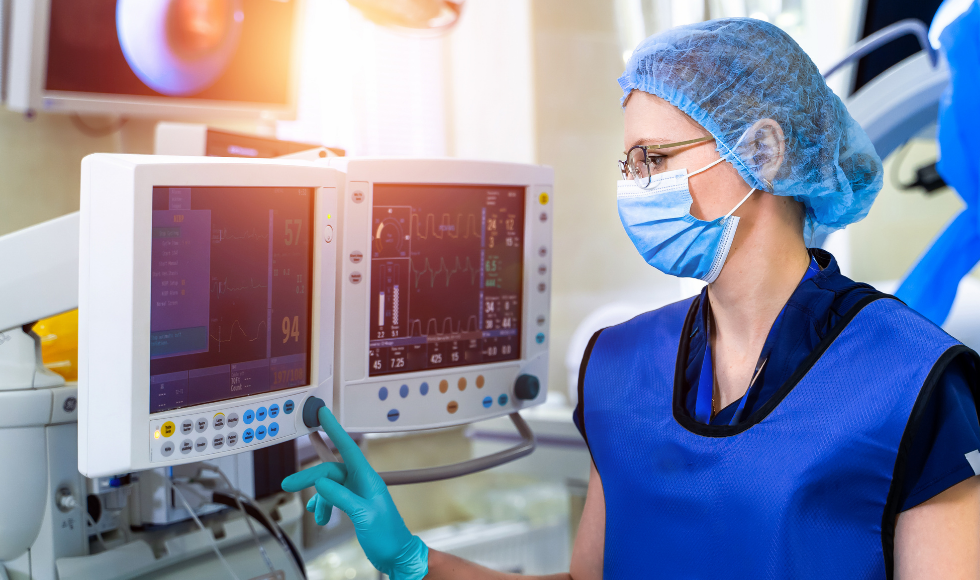In the news: Michael Schutz on the ‘beeping hellscape’ in hospitals

Beeping medical devices are so annoying, a nurse once described her workplace as a “beeping hellscape" to researcher Michael Schutz. (Shutterstock image)
BY Andrea Lawson
March 16, 2022
We live surrounded by sounds, but unfortunately not all of them are pleasant.
Michael Schutz, associate professor of music cognition and percussion, is working on how to improve some of those sounds, specifically those in hospitals.
“Like most musicians, I’m really interested in sound, and I spend a lot of time thinking about sounds and what makes them good and bad,” he told CBC Radio’s Quirks and Quarks.
Good sounds, like the ones we use in music, are often very complex. Even a single note has a lot going on. Meanwhile, simple sounds, like the ones used in medical devices, are often very annoying, he said.
In fact, those beeping devices are so annoying, Schutz said a nurse once described her workplace as a “beeping hellscape.”
“Annoying is fine for some alarms, like a fire alarm, because the purpose of that alarm is to make you want to leave. So there the more annoying, the more effective it is,” he said.
“These medical device alarms have a very different purpose, because here, their goal isn’t to alarm and make medical doctors and patients want to leave, but to inform.”
Beyond the annoyance they cause, Schutz said these bad medical device sounds lead to alarm fatigue for medical professionals and interrupts patients’ sleep, which can extend recovery time. There is even data from the FDA that found problems with these alarms have led to over 500 patient deaths.
More about Michael Schutz: The dangers of bad beeps
Those annoying sounds can be made better with a small tweak, Schutz said. By changing the shape of the notes to have a more natural rise and fall, as opposed to the abrupt start and stop of the current tones, you’re making the sound more complex and more pleasant to hear.
Schutz and his team are working on a series of experiments to ensure their sounds are not only less annoying, but also as detectable and learnable as the current sounds.
“We’re using the same melodies and pitch sequences so that way nurses and doctors who recognize the existing alarms will recognize the new sounds immediately, but they just sound a lot better.”
Because these medical devices must adhere to a certain standard, it’s not an easy thing to change.
“We can’t change the standard until we’re sure we have a better approach, but we can’t test new approaches out until we change the standards,” he said.
“We have to build up the evidence needed so manufacturers have the confidence needed to move forward with a different approach.”


